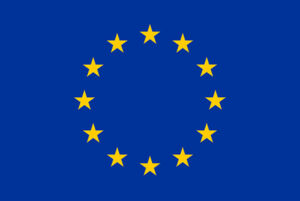
RE-ENGINEERING PERMANENT MAGNETS FOR THE GREEN TRANSITION:
EU PROJECT GREENE KICKS OFF
Bohinj, Slovenia: On 4th and 5th June, a consortium of 15 European partners led by the Slovenian Jožef Stefan Institute kicked off GREENE, short for SINGLE-GRAIN RE-ENGINEERED Nd-Fe-B PERMANENT MAGNETS, an EU project with a funding of €8 million. Over a four-year period, partners will develop high-energy Nd-Fe-B based magnets, innovatively re-engineering them at the single grain level to minimize the overall Rare Earth (RE) content, thus reducing environmental impact and supply dependencies for these critical raw materials.
Rare-earth element (REE) permanent magnets based on Neodymium Iron Boron (Nd-Fe-B) are vital components of high-tech products enabling a green energy future, like e-vehicles and wind turbines. With the advancement of the green transition, magnet demand is increasing drastically – supply, however, is under threat. The EU is dependent on imports, mainly from China, and geopolitical tensions, environmental issues connected to the extraction of these raw materials, as well as the lack of a thriving European magnet industry present significant challenges.
Permanent magnets based on NdFeB are highly valued due to their outstanding properties. They are complex materials consisting of multiple phases and their overall performance is determined by a high remanence, reflected in magnet strength, and a high intrinsic coercivity, making them resistant to demagnetization. Their maximum energy product is thus composed of both remanence and coercivity. The need to operate at temperatures over 100 °C in applications like traction motors in electric vehicles means that a high coercivity is usually prioritised over a high remanence, which negatively affects power output linked to remanence. In conventionally sintered magnets, NdFeB grains are microscopic and the regions between the grains are called grain boundaries. When exposed to a demagnetizing force, demagnetization begins at the grain interfaces with the grain-boundary phase before rapidly spreading, influencing the magnet’s coercivity.
This is where GREENE comes in: GREENE partners aim to push the boundaries of material science by developing Single-Grain Re-Engineered Nd- Fe-B permanent magnets with a new grain-boundary interface, thus allowing for a reduction of REE content. The new GREENE magnets will be more resource-efficient, offering a roughly 20% increase in coercivity, 10% in remanence, and 20% in overall maximum energy product. As a first step, novel grain boundaries and interfaces will be created using micromagnetic simulations and computational thermodynamics. Following an initial testing phase, the technology will then be applied to isolated grains from recycled and fresh streams to develop a new form of Nd-Fe-B magnet. By the end of the project, the magnet manufacturing system will be set up in an actual operational setting.
To achieve this ambitious undertaking, 15 European partners with outstanding expertise in their respective fields have joined forces, including leading material scientists, magnet manufacturers and recyclers, lifecycle analysis experts as well as end user representatives. Several of them have already cooperated in predecessor projects like SUSMAGPRO, INSPIRES and REEsilience.
“GREENE aims to develop essential technologies, knowledge, and materials within the EU, boosting Europe’s independence and industrial competitiveness in line with industry needs. It is set to make significant scientific advances, contributing to the growth of green technologies. Thus, the next four years will be crucial for research in permanent magnets,” states Prof. Kristina Žužek, Coordinator of GREENE.
GREENE Partners at the Kick-off Meeting
GREENE Consortium:
- INSTITUT JOZEF STEFAN (Coordinator) – Slovenia
- HOCHSCHULE PFORZHEIM – Germany
- UNIVERSITÄT FÜR WEITERBILDUNG KREMS – Austria
- UNIVERSIDAD DE ZARAGOZA – Spain
- AGENCIA ESTATAL CONSEJO SUPERIOR DE INVESTIGACIONES CIENTIFICAS – Spain
- HOCHSCHULE AALEN – TECHNIK UND WIRTSCHAFT – Germany
- VINNYTSIA NATIONAL TECHNICAL UNIVERSITY – Ukraine
- CENTRE NATIONAL DE LA RECHERCHE SCIENTIFIQUE CNRS – France
- MAGNETI LJUBLJANA PODJETJE ZA PROIZVODNJO MAGNETNIH MATERIALOV DD – Slovenia
- STEINBEIS 2I GMBH – Germany
- UNIVERSITEIT LEIDEN – The Netherlands
- CONSIGLIO NAZIONALE DELLE RICERCHE – Italy
- TECHNISCHE UNIVERSITAET WIEN – Austria
- HYPROMAG GMBH – Germany
- ROBERT BOSCH GMBH – Germany
Funded by the European Union. Views and opinions expressed are however those of the author(s) only and do not necessarily reflect those of the European Union or the European Health and Digital Executive Agency (HaDEA). Neither the European Union nor the HaDEA can be held responsible for them.

